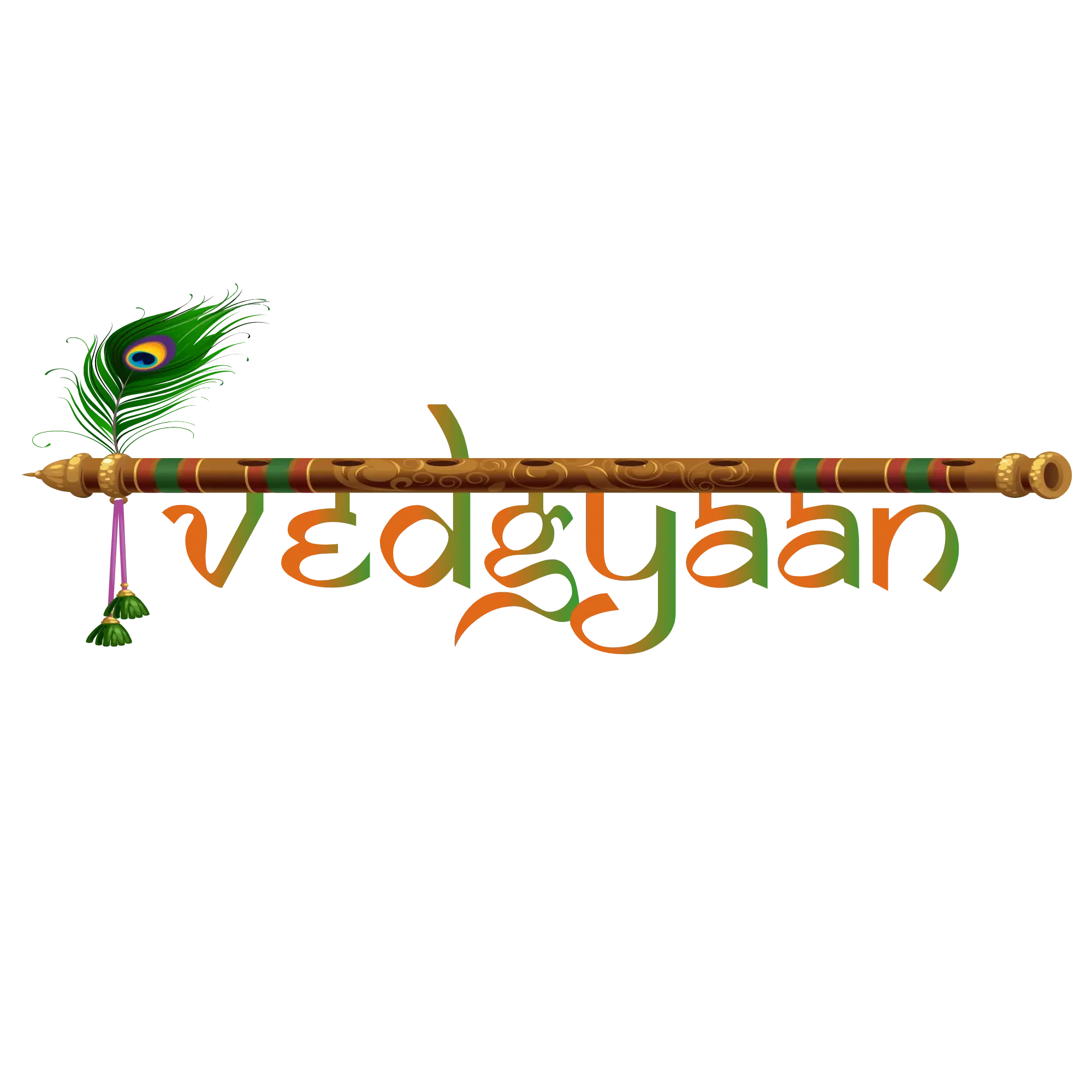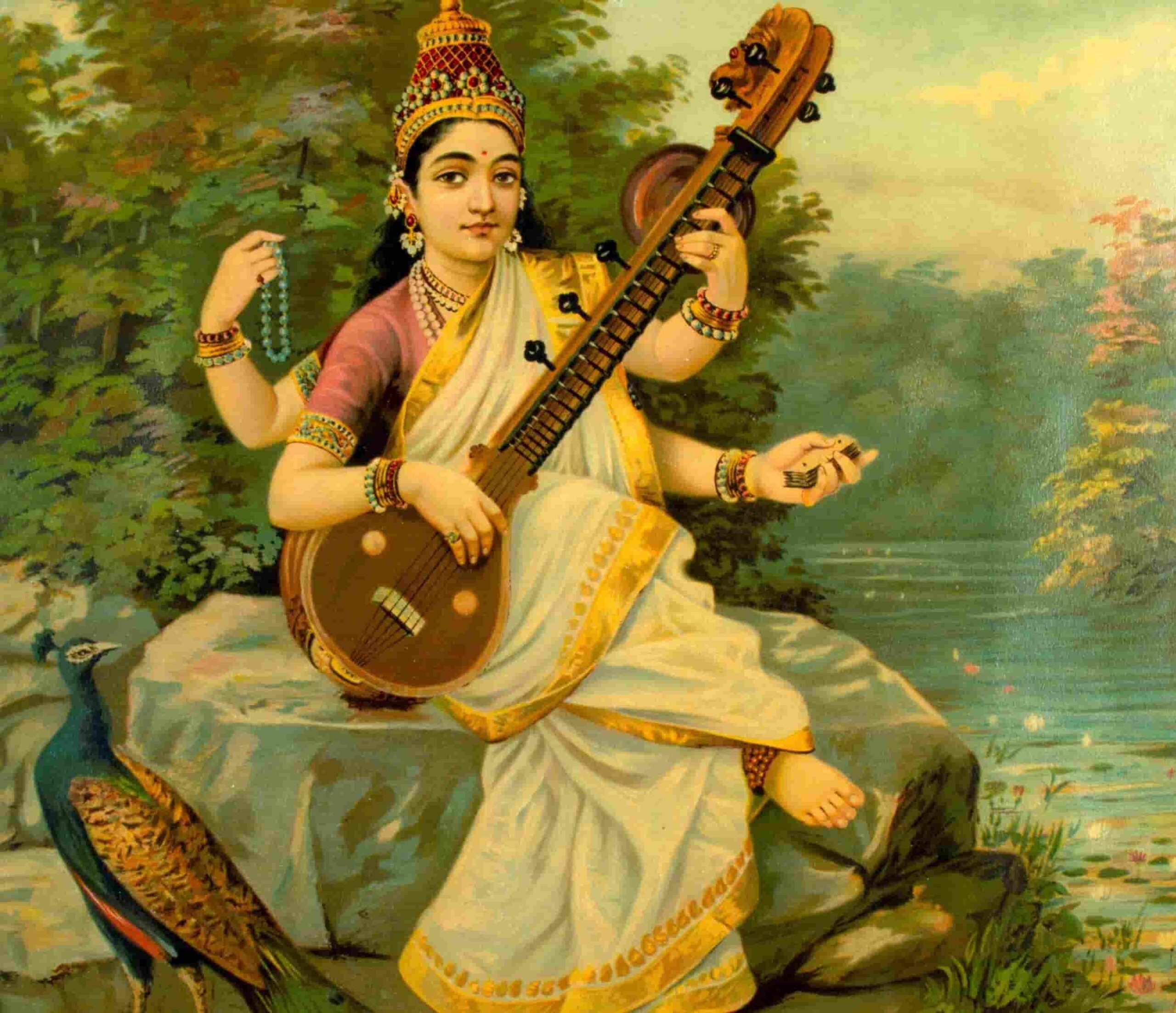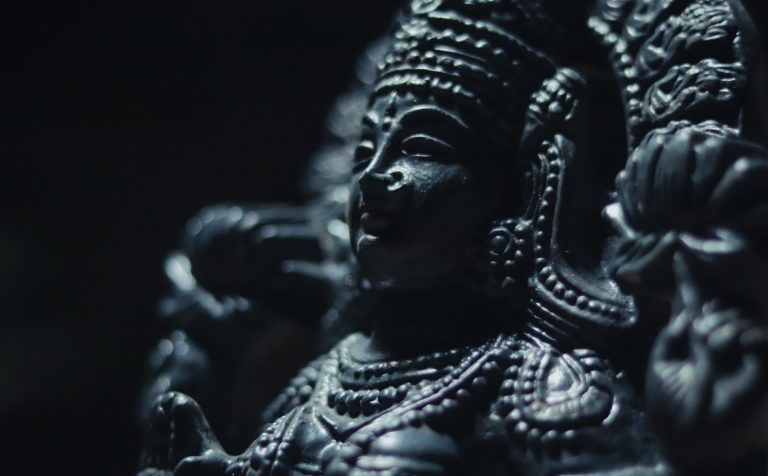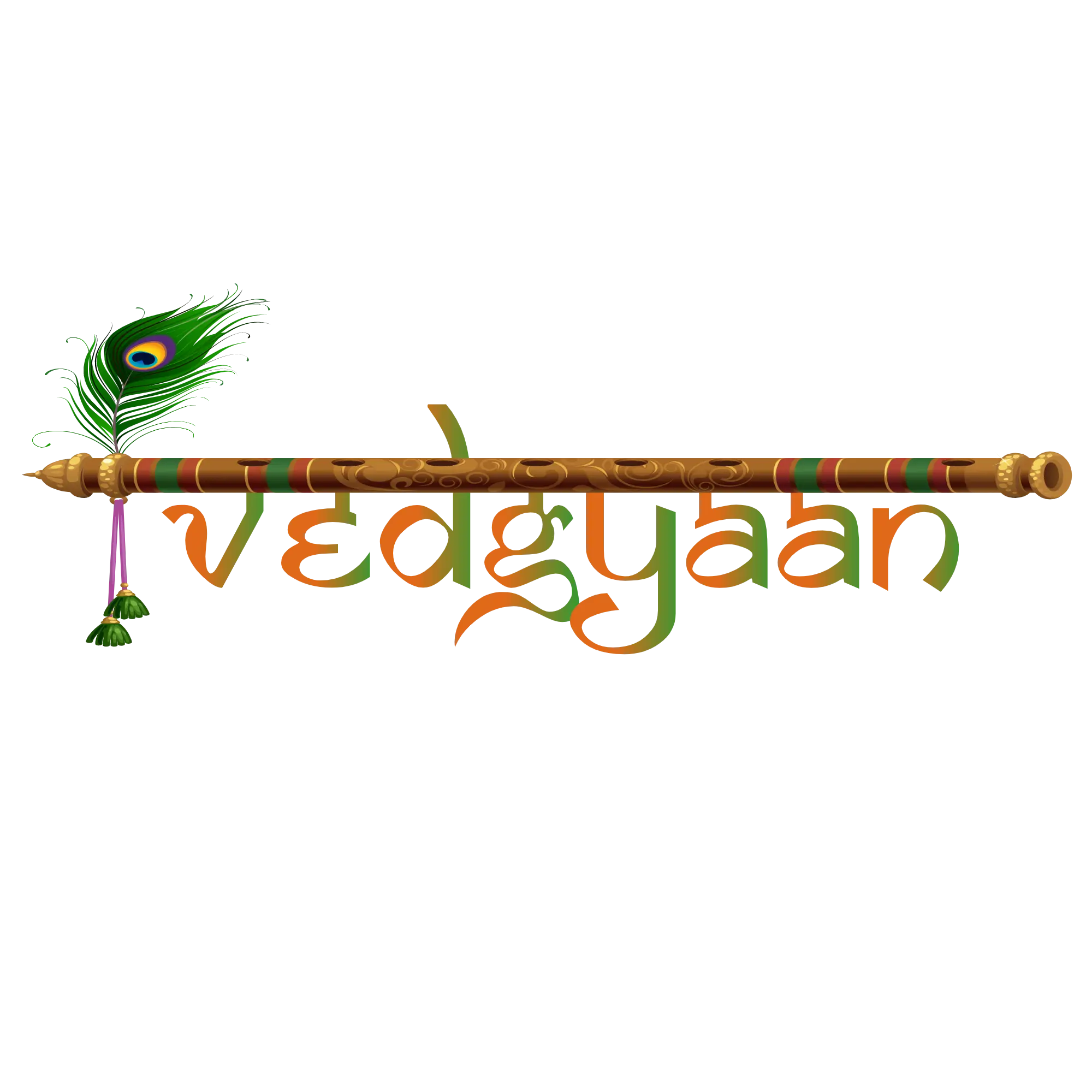The God of Creation and the Vedas, Lord Brahma is one of the most prominent deities in Hinduism. Also known as the Father of Mankind, Lord Brahma is considered to be the reason human beings exist today, forging their way through life on this glorious planet that was created for us.
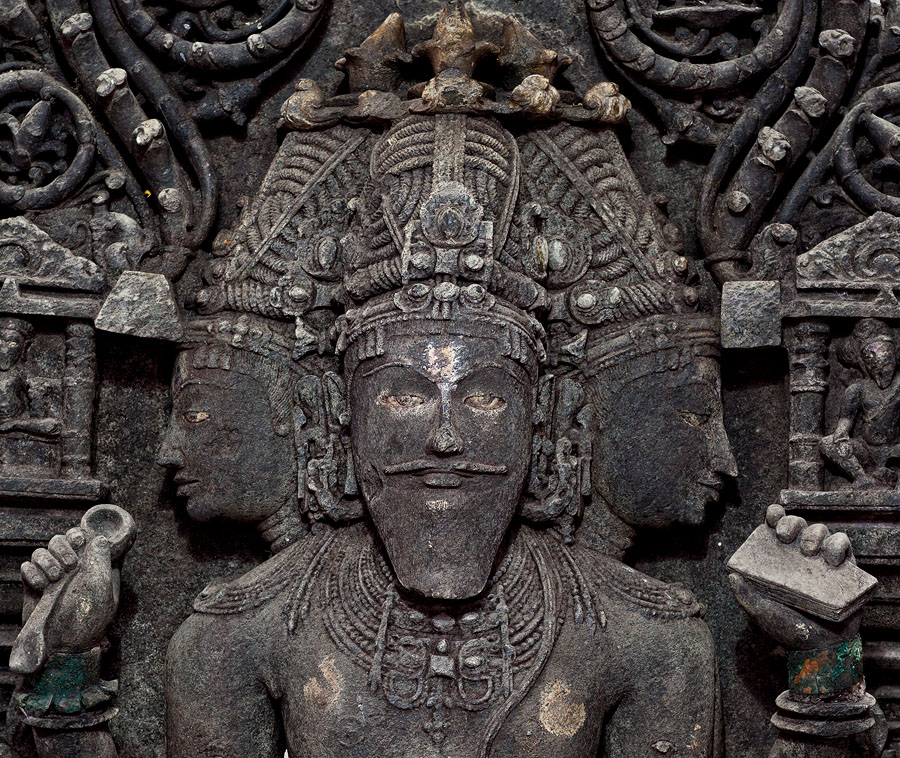
(Public Domain)
Who is Lord Brahma
Lord Brahma (Sanskrit: Creation) is the first God of the Hindu Triumvirate and is the God of Creation. It is believed that Brahma created life, which Vishnu preserves, and Shiva destroys it in order to recreate it.
According to the Vedic texts, one creation of Brahma lasts one Brahma-day which is equivalent to a period of 4,320,000,000 human years in terms of the Hindu calendar. Each Brahma day (Kalpa) comprises a thousand Maha Yugas each of which comprises the four Yugas or Ages.
| SATYA-YUGA | 432,000 x 4 | 1,728,000 years |
| TRETA-YUGA | 432,000 x 3 | 1,296,000 years |
| DWAPARA-YUGA | 432,000 x 2 | 864,000 years |
| KALI-YUGA | 432,000 x 1 | 432,000 years |
At the end of one Bhrama day When Brahma goes to sleep, all of his creations including the Universe cease to exist. This Annihilation of the universe during the Brahma night is known as the Pralaya. When he awakes he again restores the whole creation for the next Kalpa.
Although Brahma is considered to be the supreme God of Creation, he is the least worshipped. Unlike his fellow gods of the Hindu Pantheon, Lord Brahma does not concern himself with taking on the form of earthly beings and has always remained a celestial figure. However, due to his immense knowledge and wisdom, Lord Brahma has always been one of the most respected deities in the Universe. He is also the creator of the Vedas – The oldest and holiest Hindu texts. An ode to his intellect, Lord Brahma is popularly referred to as Jnaneshwara – God of Knowledge.
Lord Brahma is also closely associated with the Vedic god Prajapati. The name Prajapati is derived from the Sanskrit words ‘Praja’, which refers to ‘creation’ and ‘Pati’, which means Master. In the early Vedic period, Prajapati was considered to be the supreme God of creation and was worshipped by all the other deities. Over the centuries, Prajapati evolved and earned the name Brahma.
Brahma and Brahmana
More often than not, Lord Brahma is confused with ‘Brahmana’, although they are not the same person. Lord Brahma is the supreme leader of the Hindu Triumvirate, whereas ‘Brahmana’ is the manifestation of the eternal universe – An entity or form of energy that connects every living being.
‘Brahmana’ is also referred to as the ‘Father’ of Lord Brahma, as it is said Brahma was the first form of life – born from Brahmana. Brahmana is also considered to be a perpetual entity, without a beginning or an end, without a physical representation- an omnipresent energy source that exists beyond the bounds of time and space. The concept of Brahmana is considered to be beyond the understanding of earthly beings, and can only be understood by celestial beings like the Devas. Light and darkness, emotions and sensations, Dharma and Karma are all the will of Brahmana, The very reason life exists.
Brahma and the Vedas
The Vedas are sacred Hindu scriptures that are over a thousand years old. They are a collection of some of the oldest and holiest Hindu texts to have ever existed, largely influencing the structure of Hinduism, and shaping it as we know it today.
Lord Brahma was the creator of the Vedas – having recited every one of them. Brahma is considered to have four faces, and it is said that each of his faces recited a Veda, giving us the four Vedas – Rig-Veda, Yajur-Veda, Sama-Veda, and Atharva-Veda. The Vedas together are considered the ‘Divine Sounds of the Universe’ and are said to recreate the ‘Primal Vibrations of the universe’ when sung or recited together.
Since they contained all the knowledge of the universe, the Vedas were highly coveted. As a result, the demons Madhu and Kaitabha formulated a plan and stole the Vedas, prompting Vishnu to take the form of ‘Hayagriva’ – the one with the face of a horse – to defeat the demons and retrieve the Vedas.
Epithets: Popular names of Lord Brahma
Lord Brahma has been referred to by a plethora of names over the centuries, including – Svayambhu, Vedantha, and Chaturmukha.
- Svayambhu (Sanskrit: Self-Born)
Lord Brahma is a revered and eternal Hindu deity, widely believed to exist before the creation of the universe. He is considered to be beyond the cycle of birth and death, having always simply existed. This idea led to him being referred to as “Svayambhu” meaning “self-born.”
- Chaturmukha (Sanskrit: The one with four faces)
Brahma has always been depicted with four faces, each face spouting wisdom that is far beyond human comprehension. This unique feature of Lord Brahma earned him the title of ‘Chaturmukha’, the Sanskrit word for ‘Man of four faces’.
- Vedanta (Sanskrit: God of the Vedas)
The creation of the Vedas began when each of Lord Brahma’s four faces started reciting the stanzas of each of the Vedas. The source of the Vedas, Lord Brahma begins to be called ‘Vedanta’, the source of all Vedas.
Origin of Lord Brahma
The creator of life as we know it today, in traditional Hindu mythology, Lord Brahma has a variety of stories depicting his ‘Birth’, the most common of them being the story of the ‘Hiranyagarbha’ or the Cosmic Golden Egg.
Hiranyagarbha (Sanskrit: The Golden womb) is an ancient entity that is considered to be the manifestation of the universe and the source of all creation. Hiranyagarbha is also an alternative version of ‘Brahmana’, the entity that connects all sources of life and energy in the universe. Hiranyagarbha is the oldest entity in existence and precedes time and space. Hiranyagarbha is of countless physical manifestations, the most common of which is the Cosmic Golden Egg.
Legend says that eons ago, Lord Brahma emerged from the golden egg, to assume his role as The Creator. Brahma immediately began the process of creating the universe – creating mankind, the forces of good and evil, day and night.
In Vaishnavism, Brahma emerged from a lotus, growing on Vishnu’s navel. It is said that Lord Vishnu created Brahma to create specific lifeforms – humans and animals.
However, all folks about Brahma always refer to him as the first creation and the God of creation. According to Hinduism, the universe regenerates in cycles, and at the beginning of each cycle, Lord Brahma is tasked with creation again, to maintain the flow of the universe, and pave the way for a better existence.
Iconography: What does Lord Brahma look like?
Lord Brahma is always depicted with four heads and four arms, usually depicted with a beard. Unlike the other Gods, Brahma does not carry a weapon instead he is seen carrying a book and prayer beads. However, just like all the gods of the great Hindu Pantheon, each feature of the physical representation of Brahma is brimming with symbolism.

(Public Domain)
- Brahma’s four faces
Brahma has four faces, each face pointed towards a particular direction – North, South, East, and West. His four faces symbolize the qualities of mind, intellect, self-confidence, and ego.
- Brahma’s Four Hands
Brahma is always depicted with four hands, holding five objects in his hands – the Vedas, a rosary, a sceptre, a lotus flower, and a ‘kamandal’ (Sanskrit: Water pot).
- The Vedas
Brahma is the source of the Vedas – the holy Hindu scriptures – as he recited each one of the four Vedas. He holds them in his hand to symbolize his wisdom and intellect, as he holds all the knowledge of the Universe in his hand.
- Rosary
Brahma’s prayer beads are a physical representation of all the particles that form the universe, assisting Lord Brahma in the process of Creation.
Lord Brahma is seen riding a Swan – his sacred vehicle. A symbol of divinity and grace, Brahma’s swan is a fitting vehicle for the supreme creator of the universe.
- Sceptre
The sceptre, which is in the form of a spoon, is a symbol of Brahma being the Lord of Sacrifices, as it is a representation of the spoon used to pour holy oil during pujas or other auspicious activities.
- Lotus Flower
A lotus flower is always depicted with Brahma and it is considered to be a representation of nature and is a symbol of the energy of the universe and creation.
- Kamandal ( Water pot)
All life has evolved from the Amrit, the elixir of life present in Kamandal—thus a symbol of fertility, life and wealth, It is the source and sustenance of life, and therefore, Lord Brahma is always seen holding a water pot in his hand.
Brahma and Saraswati
Legend says that Lord Brahma was in desperate need of a companion. On one particular day, to fulfill his deepest desire, he manifested the first divine Goddess Saraswati – the Goddess of learning and the arts.
Although Saraswati is considered Brahma’s daughter, she is not his daughter in the traditional sense. Saraswati was born or created from Brahma’s mind, not from his body. Saraswati, like all other life, was created by Brahma, as he was the very first being. They did not have a generic father-daughter relationship.
Saraswati was considered to be the most beautiful entity in existence, and Lord Brahma was immediately smitten. Lord Brahma was so in love with Saraswati, he followed her wherever she went. To try and avoid his gaze, Saraswati used to avoid Brahma as much as he could. However, Lord Brahma grew a head for every direction Saraswati went – eventually leading to him growing his famous four faces.
Brahmas Creations
Lord of all creation, Brahma is responsible for everything we see around us today – Man, animals, and the Earth as we know it. Brahma is also responsible for the creation of the other gods of the triumvirate – Vishnu and Shiva, Devas(Sanskrit: Gods), and Asuras (Sanskrit: Demons).
Manu – The First Man
The result of Lord Brahma and Saraswati’s union was Manu – The first man (progenitor of humanity). It is said that the word ‘Man’ was adapted from Manu’s name. Manu was devoted to Lord Brahma and practiced years of penance to please him. As a reward for his penance, Brahma created a companion for him – Shatrupa, the first woman. Shatrupa and Manu were married and were the propagators of the entire human race.
Devas and Asuras – the creation of night and day
While Brahma was busy creating life, he had a certain moment of weakness. Some say that for a moment, Lord Brahma was distracted by something, which caused the Asuras or demons to emerge from his thigh. Due to this incident, Lord Brahma is said to have abandoned his body to take on a new one. His previous body then went on to form The Night.
To counteract the accidental creation of the demons, Lord Brahma began creating the Devas. Similarly, after Brahma created the all-good Devas, he abandoned his body, which then went on to become The Daylight.
As a result, The gods became associated with daytime and the light, while the demons became associated with the darkness and the night.
Significance of Brahma in Hinduism
The first god of the Hindu Triumvirate, the primeval god Brahma used to be of great significance in the early years. Being the creator of the universe, Brahma held a very elevated status as compared to the other Hindu deities.
Unlike Shiva and Vishnu, Lord Brahma hardly concerned himself with worldly matters, seldom appearing on Earth as an incarnation. Due to this even though Brahma is widely respected, and still considered the supreme deity, Vishnu and Shiva quickly overtook him encompassing a wider range of devotees. Similarly, Unlike the other Hindu deities, Brahma does not have a day of the week devoted to him.
However, Brahma has a devoted set of Vedic priests known as the ‘Brahmanas’, that invoke Lord Brahma’s powers for power, through a set of sacrificial rituals.
Why is Brahma not worshipped?
Over the years, Brahma was reduced to a story that is narrated rather than a god that was worshipped. Although, legend says that one of the main reasons that Brahma isn’t worshipped anymore is due to the Curse Of Saraswati.
According to legend, Brahma was said to have another wife in addition to Saraswati, named Bharathi – Goddess of Intention. Brahma created Bharati as he believed that to speak, one needed to have a proper intention, and this manifested as Bharati.
Saraswati on the other hand represented Speech itself. On one unfortunate occasion, while Bharati and Saraswati were arguing over who is more important, Brahma chose Bharati, enraging Saraswati. This caused Saraswati to curse Brahma, stating that from then on, no one would worship Brahma using speech, and if they wished to do so, they would have to praise him within their hearts.
Therefore, even today, when one wishes to offer praise to Lord Brahma, they don’t invoke his name during the Shlokas but only do it mentally.
Another reason why Brahma is the least worshipped is when he invoked Shiva’s wrath due to his infatuation with Saraswati.
When Shiva noticed how smitten Brahma was by the beauty of Saraswati, he appeared to Brahma in the form of Ardhanarishvara – Lord shiva’s half-man, half-woman form – and implored Lord Brahma to see that Man and Woman have the same soul, and physical features are not to have so much power over him. Lord Brahma however, refused to see reason, and as a result, Shiva cursed him – to never be worshipped by anyone again.
However, Lord Brahma is the symbol of eternality, wisdom, and intellect, and is the foundation of all life. All the other Hindu deities are the expressions of Brahma, his manifestation, according to his will.
Festivals Honoring Lord Brahma
Festivals are a very significant part of Hinduism, and almost every Hindu deity has a specific festival dedicated to them. The other two gods of the Hindu triumvirate – Lord Shiva and Lord Vishnu – are celebrated far and wide, with a whole slew of festivals solely to commemorate their lives. Brahma however, unlike all other deities, does not have any major festival dedicated to him.
A humble God, Lord Brahma forbade devotees to celebrate his life through festivals. As a result, there are no to very few festivals dedicated to him. However, the festival Vasant Panchami is celebrated once every year on Devi Saraswati’s birthday.
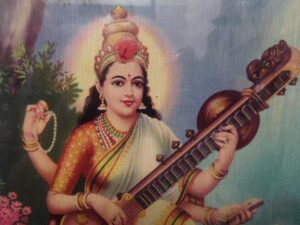
(Public Domain)
Traditionally, during Vasant Panchami, devotees would wear their best clothes and celebrate with dance and music. Although he does not wish to be celebrated, Devotees generally worship both Brahma and Saraswati during this festival.
Conclusion:
Symbolic of Infinity, Life, and Creation, Lord Brahma has been and always will be revered as the Father of all Life. The physical manifestation of the omnipresent Brahmana himself, Lord Brahma is the source of all we see around us, every minute of every day. Worshipped or not, Lord Brahma is the essence of all human beings and life, deep within us, for all of eternity.
